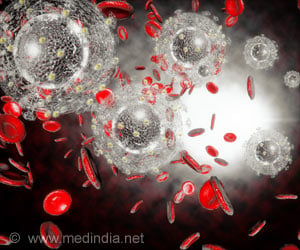Highlights
- Proteins in the bacterium Listeria which can restrict the activity of CRISPR and prevent unwanted mutations were identified by Scientists from the UC San Francisco.
- CRISPR gene editing tool is a revolutionary mechanism but which has been shown to result in unintended mutations and even cancer.
- The anti-CRISPR proteins AcrIIA2 and AcrIIA4 provide a much needed safety gateway for the use of CRISPR-Cas 9 system.
The CRISPR-Cas 9 system is a unique technology that allows scientists to add or delete specific regions of the genome and is considered to be of potential use in the treatment of genetic disorders. CRISPR stands for Clustered Repeat Interspersed Palindromic Region and it is used to generate customized RNA sequences.
Mechanism of Action of CRISPR-Cas 9 System
There exists a guide RNA that is present among an RNA scaffold, the RNA scaffold binds to the genome and the guide RNA molecule binds to the complementary DNA segment. This acts as a signal for the enzyme Cas 9 to cut the strand of DNA and within this region, the required sequence of DNA may be added.
Theoretically, the RNA segment should bind only to the complementary strand of the DNA and aid in adding or deleting segments of the DNA. However, sometimes there are mutations that are caused at unintended sections of the DNA. This has led people to be cautious about the use of CRISPR in the treatment of genetic disorders.
The newly identified anti-CRISPR proteins will aid in
- A more precise control over the use of CRISPR
- A method to block any harm caused by this technique like unwanted mutations
The research team hypothesized that some viruses were able to circumvent this CRISPR-Cas 9 system effectively and multiply within bacteria, therefore, there may exist anti-CRISPR molecules, which could be used to turn off the CRISPR system.
The team felt that the CRISPR gene editing system was “not smart” and that, ideally, it should cut and edit the very bacterial genome that it was a part of. Since, it never attacked the bacterial genome, it was evident that there may be certain elements, which prevented it from doing so.
Experiments on Listeria
Listeria is a bacterium that causes foodborne illness. The research team studied this bacterium for the presence of anti-CRISPR proteins among strains that showed CRISPR system attacked the host genome. They identified 4 anti-CRISPR molecules, out of which two of them were found to be effective against SpyCas9, an enzyme that is commonly used in CRISPR editing tools.
AcrIIA2 and AcrIIA4
AcrIIA2 and AcrIIA4 were found to be potent in inhibiting the CRISPR-Cas 9 system and the researchers are looking forward to conducting experiments in human models to ascertain efficiency. The researchers would also like to continue their experiments in these anti-CRISPR molecules to understand their mechanism of action and identify other potential blockers for the CRISPR-Cas 9 system.
These anti-CRISPR proteins will be effective in controlling the gene editing system and can be used to turn the system off to avoid non-specific mutations. There have been previous studies that have found that such non-specific mutations could lead to the development of cancer. This has resulted in a failure to use the CRISPR-Cas 9 system for treating genetic disorders.
The scientists believe that with the identification of the anti-CRISPR molecules, there will be increased use of CRISPR to treat disease conditions. CRISPR is also used to increase the activity and decrease the activity of certain genes, without deleting or adding elements to the gene. Such modifications, called CRISPR interference and CRISPR activation, can also be carried out in a safer environment with these anti-CRISPR molecules.
Senior author of the study, Dr. Joseph Bondy-Denomy, a UCSF Sandler Faculty Fellow added, "Scientists and the public are reasonably concerned about CRISPR being so powerful that it potentially gets put to dangerous uses. These inhibitors provide a mechanism to block nefarious or out-of-control CRISPR applications, making it safer to explore all the ways this technology can be used to help people."
CRISPR and its gene editing ability has been a cause for a lot of concern as its use could potentially alter significant aspects of the DNA. Though there is a lot of scope for this gene editing tool in the treatment of disease conditions, scientists have been cautious about using it. The discovery of these anti-CRISPR proteins will provide a defense mechanism that could restrict any harmful use of this gene editing tool.
References:
- What is CRISPR-Cas9? - http://www.yourgenome.org/facts/what-is-crispr-cas9)














